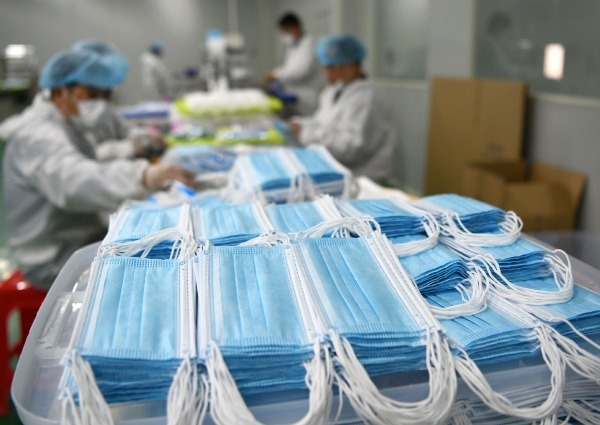Frequently Asked Questions About Mask Sterilization
2021-12-09

Workers make medical protective masks at a factory in Nanchang, Jiangxi province. [Photo by Hu Guolin/For China Daily]
A video, claiming the sterilization processes of masks leave carcinogens on the products, has raised concerns among the general public last week. Então, what exactly does happen during mask production? Is it really a cause for concern?
1. What is used to sterilize masks?
Medical máscaras are sterilized in a variety of ways including with radiation, ethylene oxide, steam and other methods.
Most of the medical and N95 masks available on the market are sterilized by ethylene oxide (EtO). It is an important sterilization method that manufacturers widely use to keep medical devices safe.
2. Can ethylene oxide residue on masks cause immediate/acute health effects?
Only long-term and occupational exposure to EtO has been linked to cancer in research studies.
For major manufacturers that follow production standards and guidelines, the level of residual EtO left on a mask after it has undergone EtO sterilization is within safe limits.
3. How long does ethylene oxide remain in the body?
EtO is eliminated from the body fairly quickly – with levels dropping by about 50 percent every 42 minutos. At that rate, almost 90 percent of EtO would be gone from the body after two hours.
4. Is it necessary to shake a mask before wearing it?
It is not necessary to shake a mask before wearing it.
Shaking the masks or drying them under the sun before using them is a personal choice. These actions generally do not hinder the protective effect of the mask.
Medical staffers do not shake their masks because a mask is sterile when taken out of the package. Deliberately shaking and exposing it in the air can cause unintended contamination in places such as hospitals.
5. What is the scientific recommendation for mask-wearing?
– People not in a high-risk environment such as in direct contact with respiratory disease patients don’t generally need to wear N95 masks.
– In places where the virus may be present, como hospitais, closed rooms, and medium risk areas, wearing a medical mask is sufficient.
– It is recommended to change masks daily.
– When not wearing a mask, people can hang the mask up or help preserve it using a clean paper towel.
– For the prevention of respiratory and digestive diseases, wearing masks alone is not enough. People must pay attention to hand hygiene and wash their hands frequently.
6. Can masks made by smaller manufacturers meet ethylene oxide level safety standards?
The costs of EtO sterilization devices are high, so smaller manufacturers generally use other methods of sterilization.
For poorly-made masks, the hygiene of the product poses more health concerns than the level of EtO it may contain.
Fonte: CHINADAILY
















